Credit: Biovision-Infonet
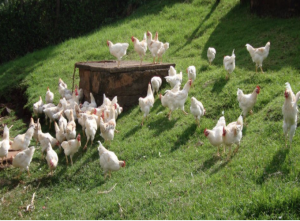
(c) A. Wachira, KARI, Kenya
Living conditions of chickens must be established and maintained to “accommodate the health and natural behavior of animals, including access the outdoors, shade, shelter, exercise areas, fresh air, and direct sunlight. Continuous confinement is not permitted.
The welfare of chicken includes its physical and mental state. Good poultry welfare implies both fitness and a sense of well-being for the animal. Any poultry kept by human, must at least be protected from unnecessary suffering.
1. Introduction
Origin of chicken
The term poultry refers to domesticated birds kept for meat, eggs and feather production. Domestication of poultry is thought to have started in South Asia, at least 2000 years ago. The Asian Red Jungle Fowl is generally assumed to be the ancestor of the modern poultry breeds, but maybe the first domestication of the fowl took place much earlier in China. Following this domestication various breeds have originated from isolated groups of poultry, partly by adaptation to the various environments or cultivation by man. Today’s poultry breeds are all different based on appearance and performance.
Understand chicken as the animals they are, information on behaviour
Chicken are animals with a coherent social structure. If they are in groups up to 25 animals, they have a pecking order based on strength, but they can recognize up to 100 other hens. They communicate a lot both using body, tail and voice. They are hunted and eaten by many, and a large part of their alertness, communication and behavior is about predators and e.g. warning each other against them. This emphasizes their need for being managed in a calm way. As humans, we should never make sharp, loud sounds or sudden movements, when we are with our chicken.
They have a wide range of comfort and grooming behavior, such as preening (maintenance of feathers), stretching wings, and keeping themselves clean and well managed. They have a strong incentive for dust bathing, which is a way of preventing attack of external parasites and as such very important for their well-being. They will normally scavenge for feed, both for seeds, greens, vegetables and worms and other small animals. Their search for feed leads to a lot of ground-scratching and pecking, and they have a great need for this type of behavior. They have a need for sleeping and undisturbed resting, and will find the highest point to be protected. Hens can become ‘broody’ which means that they are highly motivated to have chicken, and become very frustrated if they are not allowed to nest building. On the other hand, they cannot be forced to become broody; some breeds become broody more easily than others. They have a strong sense of being mothers and taking care of their small chicken and protect them.
East African and Kenyan poultry population
Village chicken production systems are mostly based on the local scavenging domestic fowl (Gallus domesticus), which predominates in African villages.
Kenya has an estimated poultry population of 29 million birds, with chicken forming the largest proportion. Of these 76% consist of indigenous chicken, layers 9 %, and 13% broilers. Other poultry species like ducks, geese, turkeys, pigeons, ostriches, guinea fowls, and quails make up 2 % of the poultry population. Poultry is one of the most important livestock enterprises in rural households where over 70% (24 million) of the country’s population live and derive their livelihood. Indigenous chicken are kept by 90% of rural households while broilers and layers are mainly reared by urban and peri-urban farmers who target the ready market. Other poultry are kept by farmers with special interests.
On average, each household in Kenya keeps about 10 chickens, mainly for domestic consumption. There is a relatively high mortality because of lack of drinking water and disease control, and predators. On average, a farmer loses up to 40 percent of their stock annually due to these easily controllable challenges. With proper management practices indigenous chicken can become very productive and have a very good potential for improving the income of the owners.
Village chicken systems in rural Africa are characteristically:
- an indigenous and integral part of the farming systems, with short life cycles and quick turnovers
- low input production systems, the majority free range chicken
- a means of converting low-quality feed into high quality protein
Hybrid layers
Hybrid layers are mostly kept near potential markets for eggs (such as cities and towns) where space is limited but readymade commercial feed are easily available. In non-organic farms, layers are often kept in individual battery cages, but organic poultry are always is free range with outdoor access. In Kenya they are often reared in deep litter houses where there is free movement and perches are provided.
Broilers
Broilers are heavy breeds, often hybrid breeds specially bred for meat production, and bought as young chicks. In organic farms, less fast-growing broilers should be preferred, and they should have outdoor access. Conventional broiler hybrids are very fast growing birds and need specially manufactured feeds and very controlled conditions, and their bones are often weak. These breeds must be discouraged in organic farms, and they should be allowed exercise areas, preferably outside.
Generally, robust and suitable breeds should be chosen in organic herds. It is ethically right to choose animals which can both lay eggs and where the males can be used for meat production. In many industrial countries, the breeds are specific for either egg production or meat production, and this means that e.g. the males from egg producing breeds are killed just after hatching, because they are not good for meat production. This is an ethical dilemma of organic production.
2. Chicken management and raising according organic standards
The following are required:
- Poultry or poultry products must come from chicken that have been under organic management from the second day of life. If one cannot verify this they are not raising organic chickens.
- Organic chicken must not be beak trimmed, which is a practice in some conventional poultry productions.
- All feed, except minerals and vitamins, must be organically produced. Non-synthetic vitamins are preferred, but synthetic sources are allowed if non-synthetics are not available.
The following feeds are prohibited:
- i. Animal byproducts from mammals and poultry, such as meat and bone meal, are not allowed in feed rations.
- ii. Fishmeal is not permitted, (except it can be proved that it is organically produced).
- iii. Synthetic amino acids are not permitted.
- iv. Non synthetic but non agricultural products are permitted.
Organic guidelines
The handling of feed ingredients must comply with organic requirements. Some people may buy organic feed from mills or grow their own ingredients for feed, but organic guidelines must be followed with either choice.
- No drugs may be used to promote growth.
- Transporting Live Chicken upside down is not allowed, regardless of the distance
- Physical alterations such as beak trimming and toe trimming are not allowed, exceptions could be when the welfare of the animal or flock is threatened. Beak trimming and toe trimming are still discouraged and would be handled on a case by case basis.
- Living conditions must be established and maintained to “accommodate the health and natural behavior of animals, including access the outdoors, shade, shelter, exercise areas, fresh air, and direct sunlight. “Continuous confinement is not permitted, but temporary confinement is allowed if adequately justified.
- Dust wallows are required, as is clean, dry bedding. Any bedding that is of a type typically consumed by poultry must meet all organic standards.
- Birds are not permitted to come into contact with treated wood used to construct chicken pens.
- Health care measures must include preventive practices such as good nutrition, sanitation, healthy living conditions and vaccinations. Preventive use of antibiotics is not permitted. Synthetic parasiticides including coccidiostats are not permitted. Although some natural alternative products are allowed, health problems must be controlled primarily through good management.
- Birds that do become sick cannot be withheld from medical treatment just to preserve their organic status. They should be medicated and then sold into the conventional marketplace.
- Chicken manure must be managed in a way that does not contribute to contamination of crops, soil, or water and that optimizes the recycling of nutrients.
3. Breeds and Breeding
Kenya currently has limited chicken breeds namely indigenous chicken, the hybrid layers, and broilers.
Indigenous chicken breeds
Local chicken breeds are the most abundant livestock species in Kenya with an estimated population of 23 million birds. Indigenous chicken are mostly kept under a free range system in small flocks of less than 30 birds. They are more robust and adapted to local conditions than the hybrids but have a lower productivity. Below some normal features in indigenous chicken. As can be seen many of the above pure breeds features can be found among indigenous chicken, indicating a great amount of mixed genes. Breeding indigenous chicken for improvement of the breed is very feasible for the specialist.

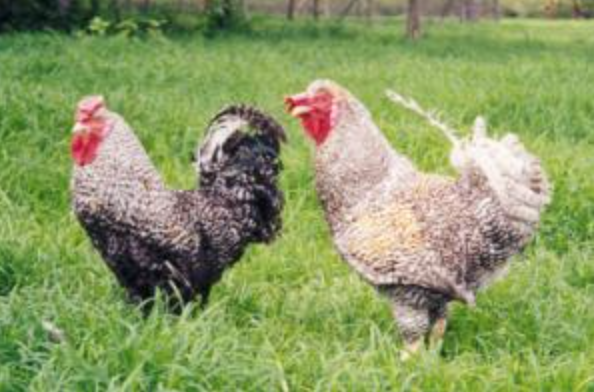

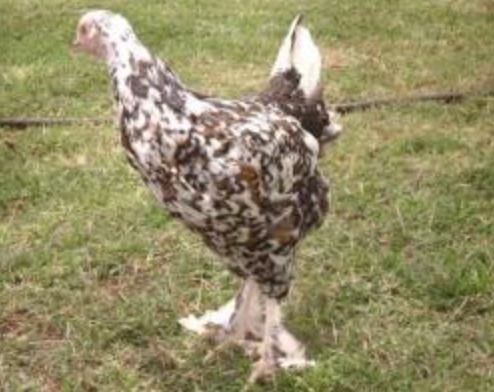
(c) A. Wachira, KARI, Kenya
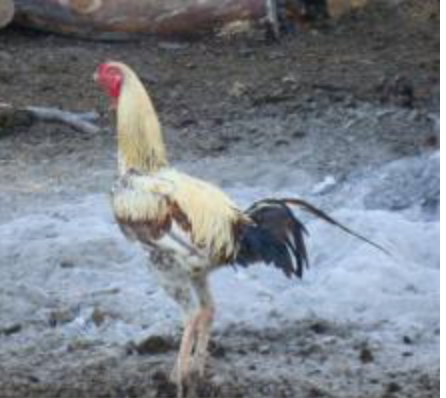
(c) A. Wachira, KARI, Kenya
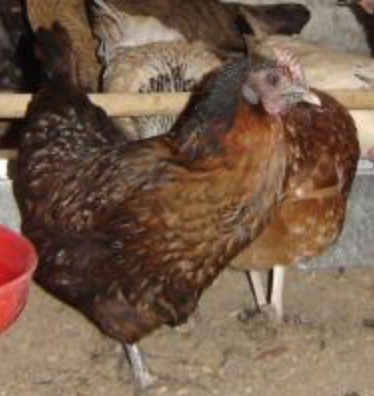
(c) A. Wachira, KARI, Kenya
Layer breeds
These are chicken breeds selected for laying eggs and maybe divided into several categories:
Light breeds
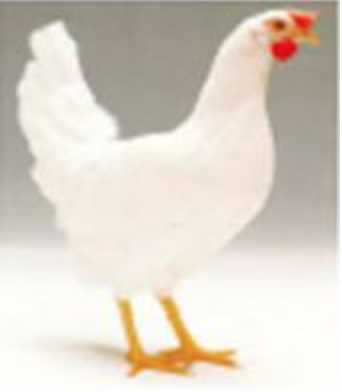
(c) A. Wachira, KARI, Kenya
Light laying breeds include the White Leghorn, Brown Leghorn and Black Minorca. The maximum adult bodyweight of light races is about 2 kg for females and 2.5 kg for cocks. The White Leghorn is known to lay a large number of white eggs. It requires less feed due to its small size and is an efficient feed converter. Its low body weight allows it to withstand high temperatures better than other breeds. However, White leghorns are generally nervous and at the end of the laying period give relatively less meat than heavier breeds. For this reason the use of lighter breeds has generally changed in favour of crosses.
Medium breeds
These are the Rhode Island Red (RIR), New Hampshire (NH) and light Sussex (LS). The RIR has dark brown feathers, lays brown eggs and is heavier but more susceptible to high temperatures than the White Leghorn. In poor conditions RIR is more viable than the light breed and has a higher carcass value. The NH has light brown feathers with similar characteristic to RIR. The LS is a white bird with black striped neck feathers and black tail.
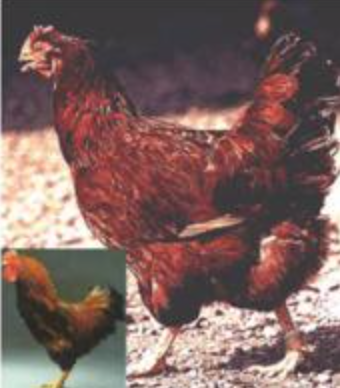
(c) A. Wachira, KARI, Kenya
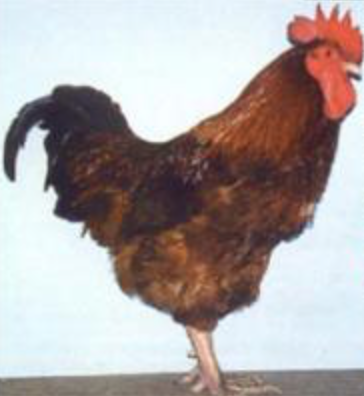
(c) A. Wachira, KARI, Kenya

(c) A. Wachira, KARI, Kenya
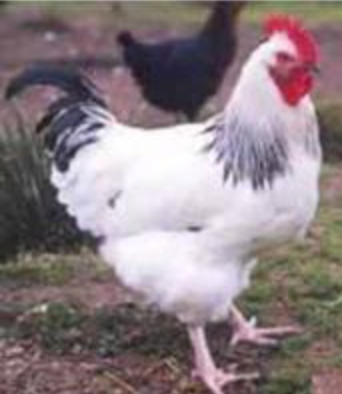
(c) A. Wachira, KARI, Kenya
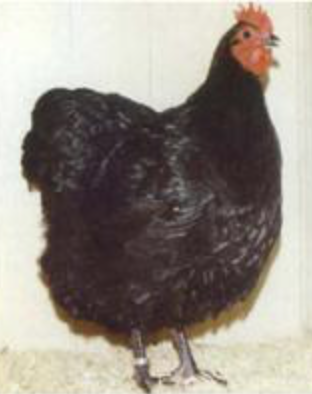
(c) A. Wachira, KARI, Kenya
Heavy breeds
Heavy breeds include Barred and white Plymouth Rock, Buff Orpington as well as White Jersey Giant and Arbor Acres Hubbard Vantress. These breeds are used for crossing to obtain the fast growing broiler strains available from hatcheries. These are mainly the meat birds commonly referred to as broilers. Breeder stocks consist of the White Cornish (WS) and White Plymouth Rock (WPR). The White Cornish is a heavy, white feathered breed that lays brown shelled eggs. It has been developed for quality and quantity of meat. White Plymouth Rock is similar to the WS but lays more eggs.
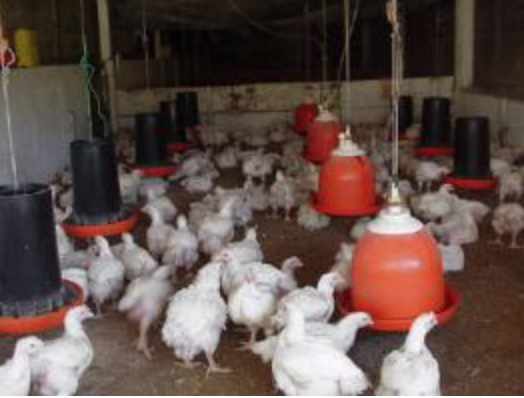
(c) A. Wachira, KARI, Kenya
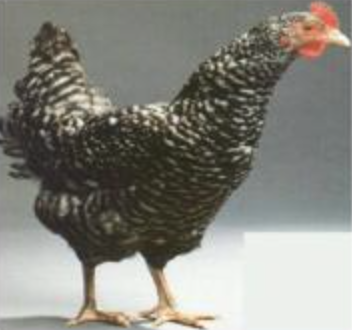
(c) A. Wachira, KARI, Kenya

(c) A. Wachira, KARI, Kenya
Hybrids
These are crossbreds originating from breed crossing. Their performance and viability (hybrid vigour) is better than the pure breeds. Breed crossing is practised in most developing countries including Kenya. Large scale poultry enterprises always use hybrids originating from line crossing due to their superior performance.
Commercial Pure and hybrid birds are produced and sold by a limited number of breeding companies to poultry farms in almost every country of the world.
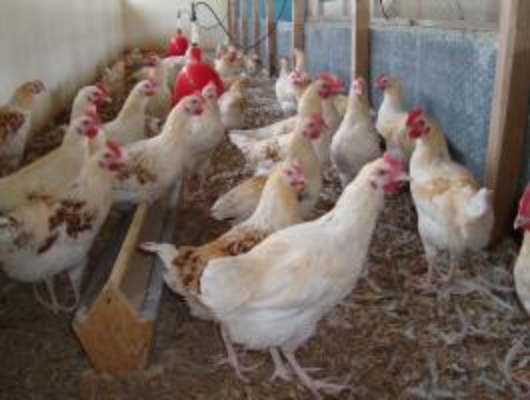
(c) A. Wachira, KARI, Kenya
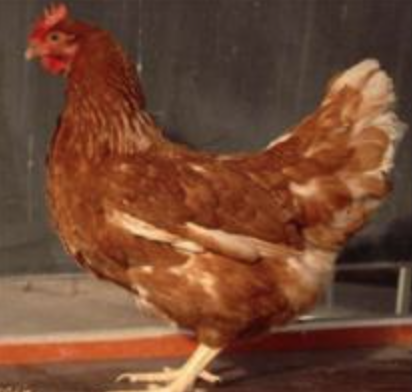
(c) A. Wachira, KARI, Kenya

(c) A. Wachira, KARI, Kenya
Commercial sources of breeding stock in Kenya
Buy day-old chicks from hatcheries such as:
- Kenchick
- Muguku
- Kenbrid
- Sigma suppliers
- Western hatcheries
- Bixa north coast